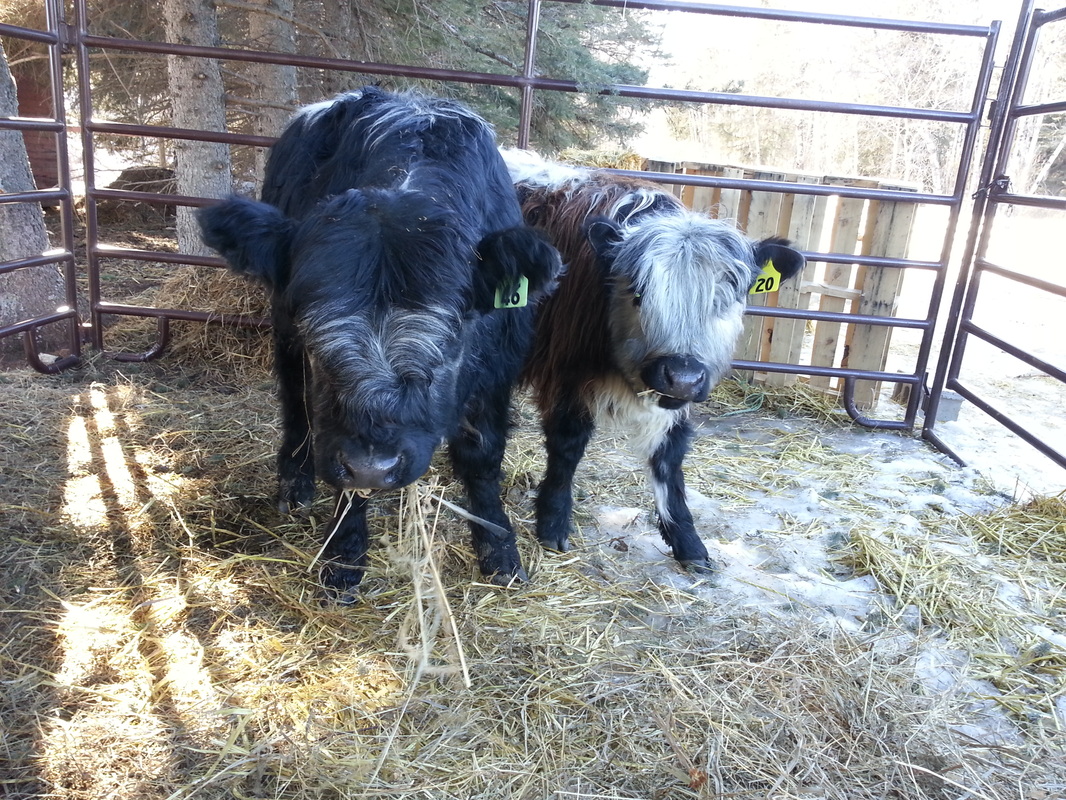The riggit colour pattern is not limited to black and white, but does usually arise from the traditional Galloway. The little heifer's mother was black and white belted and the bull calf's mother was brown and white riggit. A strong riggit pattern is a stripe down the spine, distinct from the rest of the cow, but it may have speckles as well. The stripe is not like a skunk where it is highly defined, but mixed with the other colors of the hide.
The bull calf should appear masculine, be angular with a large square head, while the female heifer calf should appear more refined. These two are excellent specimens of Galloway cows, but the bull is 1/8 Highland from a grandmother way back and the little heifer lost her mother when she was only three months old and has had to fend for herself, so is smaller than she would have been. She is very pretty with her long eyelashes and lovely colouring.
The two are in a small pen until they are comfortable with me, and they are halter trained. Kylie, the Highland heifer, is in the pen beside them and is excited and interested in the newcomers that look and sound like her. The bull will breed the girls likely late this fall. The breeder tells me this is common in this older style of cow and while it does slow the growth of the cows somewhat, it is not harmful to their constitutions and will not hamper them for further babies in the future. The gestation period of a cow is nine months, so if they are bred in October or November, they would have late summer calves, which is perfect, because they will be strong and established for winter.
The Galloways were raised 2 hours from here and do not have winter shelters or extra bedding. The Highlands and Galloways are double coated, so they do not suffer from the extreme cold as the single coated cattle, plus they need to eat much less because they are not just trying to keep warm.
I love my little cows. Welcome to the Fat Ewe Farm! Maybe it will have to be the Fat Cow Farm?


 RSS Feed
RSS Feed